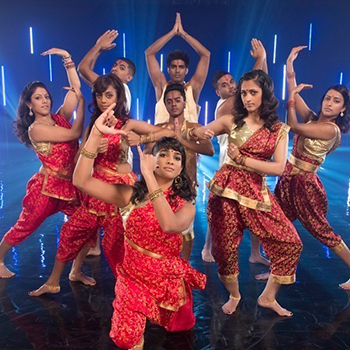Dance Forms that originated from South India

South Indian Dance Forms to Love:
Out of all the art forms, if there is a form that is widely admired and considered aesthetically pleasing, then hands down, it is the art form of dance. Dance is an excellent way to portray emotions and convey messages through gestures, movements, and expressions. When we talk about dance forms, it includes classical dance and folk dance. South India is home to various classical and folk dance forms like Bharatnatyam, Kathakali, Kuchipudi, Yakshagana, Mohiniyattam, etc. The below list of dance forms is inclusive but not exhaustive.
Bharatnatyam:
This beautiful dance form originated from the southern state of Tamil Nadu. The regulatory body of dance in India, Sangeet Natak academy recognizes a total of eight dance forms, and Bharatnatyam is one of them. It is believed that this form of dance was developed by Saint Bharat in his work, Natya Shastra somewhere between the 3rd century BC and 3rd century AD. Hence the name Bharatnatyam translates to the dance of Bharat. The dancers usually depict a certain story from Hindu Mythology and are accompanied by music and beats to maintain the rhythm.
Kathakali:
Widely practised in the Malayalam speaking belt of the South, this dance form is more of narration of various folklore and stories from Hindu Mythology. The artists have their faces painted for the performance, and the most important part of this dance form can be hand gestures and facial expressions. Just like any dance form, this form is also accompanied by music. The unique aspect of this dance form is that the dance movements also incorporate certain movements from the ancient Indian martial arts. Just like its contemporary in Tamil Nadu, Bharatnatyam, this dance form can also be traced in the Natya Shastra by Sage Bharat.
Kuchipudi:
Kuchipudi is the name of a village in the south Indian state of Tamil Nadu. One of the eleven major classical forms of dances, this is also developed around spiritual beliefs and temples. This dance form has most of its works around Lord Krishna and the Vaishnava sect of Hinduism. Accompanied by Carnatic music and instruments, it is performed worldwide despite originating from a small village. Performed by males and females, clad in the traditional costume like Angavastram and sari respectively, the performance like any other Indian form of dance begins with an invocation.
Yakshaganam:
This form of dance is exclusively a theatre form and performance-oriented. Originating from the region of Udipi and Uttara Kannada in Karnataka and Kasargod in Kerala, this form of dance beautifully incorporates dance, dialogue, music, and various techniques on stage. And the dance style and form it uses is considered unique. Yet again, this has a strong influence from the Vaishnavism sect.
Mohiniyattam:
Another dance form from god’s own country, the name Mohiniyattam is derived from “Mohini,” the female avatar of Lord Vishnu, who is believed to have taken the form to destroy evil. Natya Shastra by Sage Bharat being the master book on Indian classical dances also contains the descriptions of Mohiniyattam. This dance form is considered as the most feminine form of dance. Another interesting feature of this form of dance is that the song that accompanies is in Manipravalam, which is considered a hybrid of Malayalam and Sanskrit.
Every dance form, be it classical or folk, embodies aspects of divinity alike. As already mentioned, this list contains many, but not all forms of dance that originated in the Southern part of India owing to the fact that there exist a number of dance forms, and the richness and the complexities involved cannot be contained in a certain number of words.
References:
https://en.wikipedia.org/wiki/Indian_classical_dance